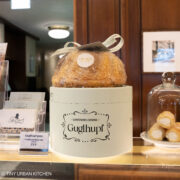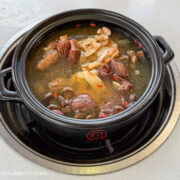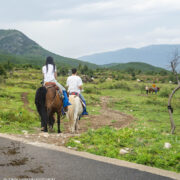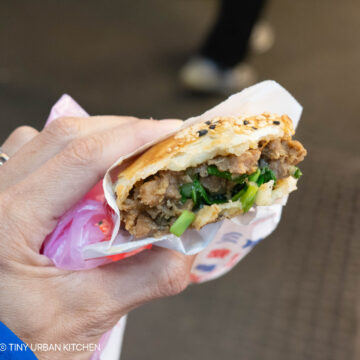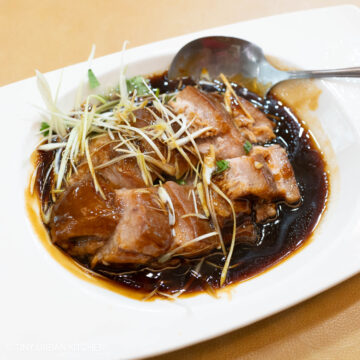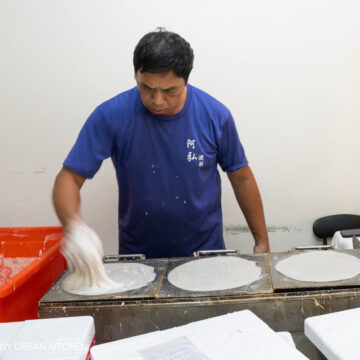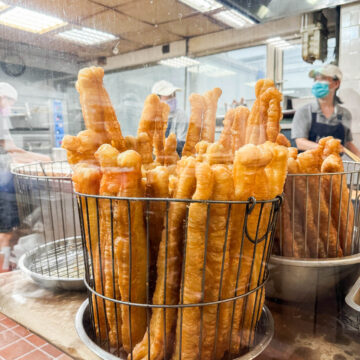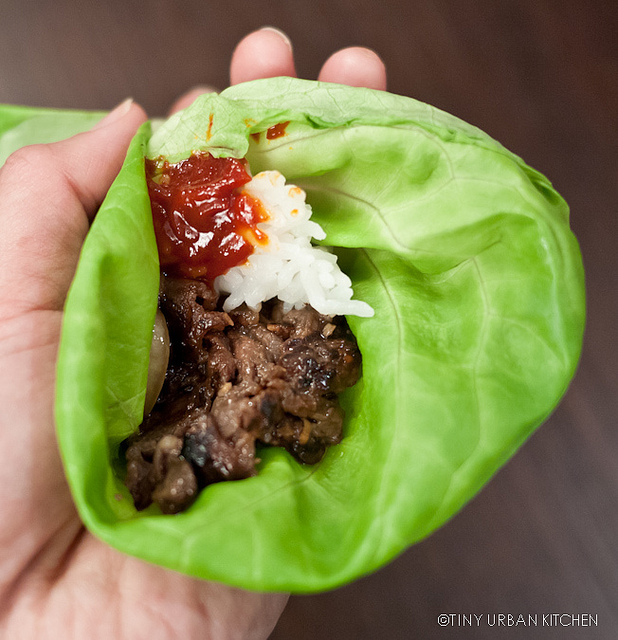
Up until I was around eighteen, I was woefully unenlightened when it came to certain Asian cuisines.
My family rarely, if ever, dined at Korean restaurants when I was growing up. I still remember finally visiting a local Korean restaurant with my parents while I was in college and being tickled at all the lovely free "appetizers" or "tastes" that came out (think various types of pickled vegetables, tofu, and other little bites).
Ever since college, I've learned to love Korean food. The rich, fiery, and complex flavors of this delightful cuisine borrow influences from China and Japan yet maintain much of their unique originality.
Alas, since Bryan's not the biggest fan of Korean food (and we've been together essentially since college), I have never really explored cooking the cuisine that much (notice the dearth of Korean restaurants and recipes on this blog?).
Thankfully, I still get my fix at times. I hit the jackpot when my sister married a Korean (Hi Mike!). Mike's a fantastic cook and knows how to make all sorts of amazing Korean dishes.
One favorite I've always been dying to make is bulgogi, Korean barbecued beef. Perhaps you've seen it at Korean restaurants where they have the grill right at the table. Mike was super kind and shared with me his recipe for making this timeless classic.
This dish is a huge crowd-pleaser. I've made it at various potlucks and it's always super popular. It even won a competition at my church years back.
Try it out - you won't be disappointed.
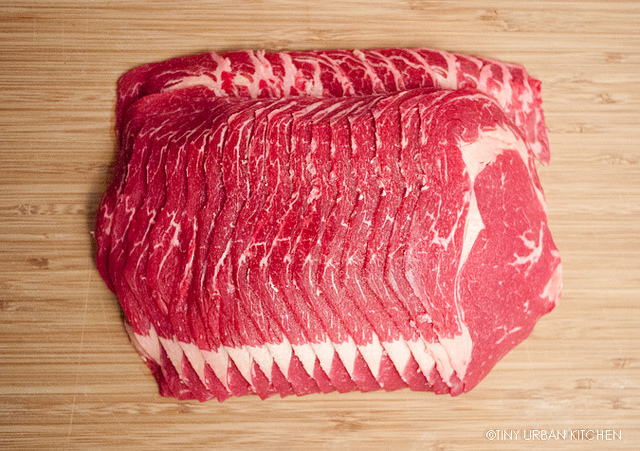
Start with thinly sliced sirloin or ribeye beef. The best way is to pick this up at a Korean market because it's already been perfectly pre-sliced really thinly for this exact purpose. Chinese hot pot pre-sliced meat may work as well, but I've never personally tried it. If you must, you can try slicing your own, but I would recommend semi-freezing it before trying.
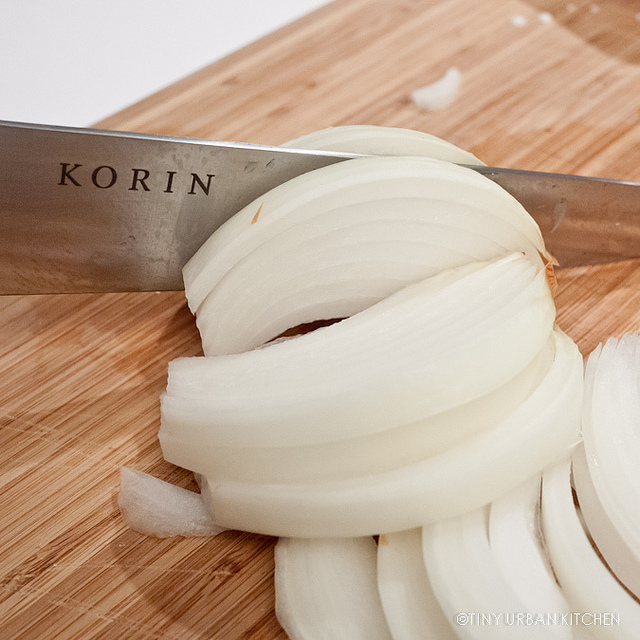
There are many aromatic ingredients that add to the flavors of this dish, such as onions, garlic, and ginger.
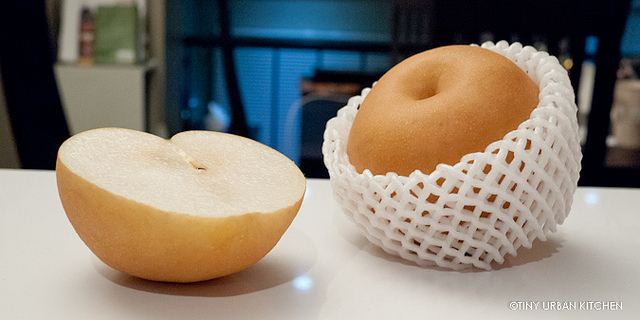
But the key ingredient? The "secret" ingredient?
Coke!
Just kidding! Well, half kidding. You need something acidic to help break down the proteins so that they become more tender during marination. Pears or apples are common, but some people actually use something carbonated, like Coke!
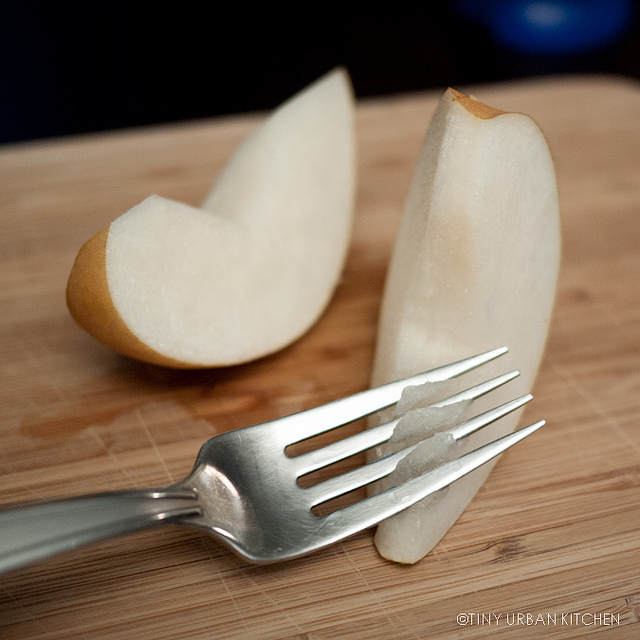
I used Korean pears, but you can use any sort of ripe pear. According to Mike, canned pears work just fine as well (and they are easier to mash!).
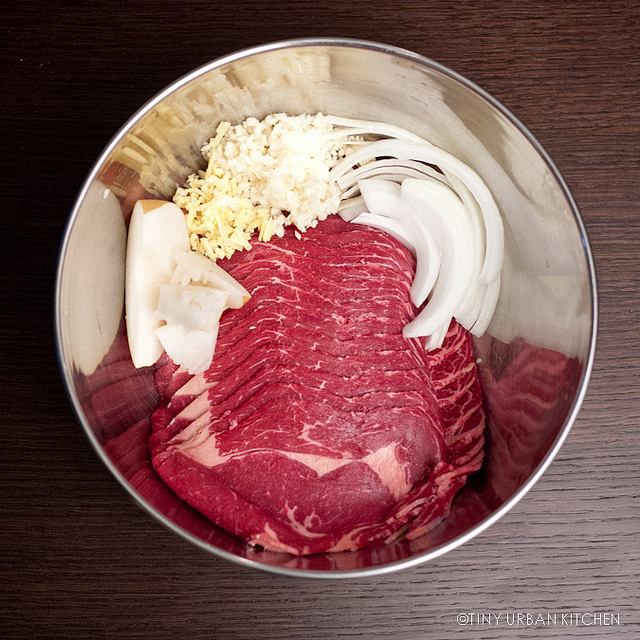
Combine all ingredients together in a bowl (except the sesame oil).
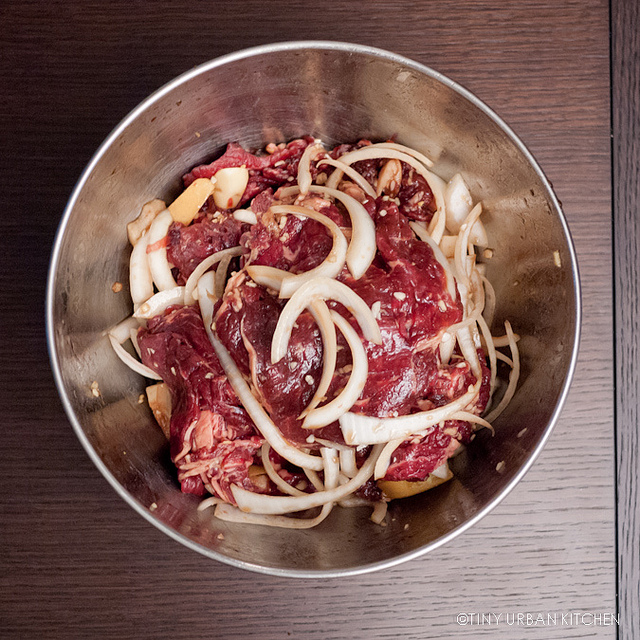
Mix!
Mike suggests adding the sesame oil the next day. This allows the marinade (sans oil) to better penetrate the meat.
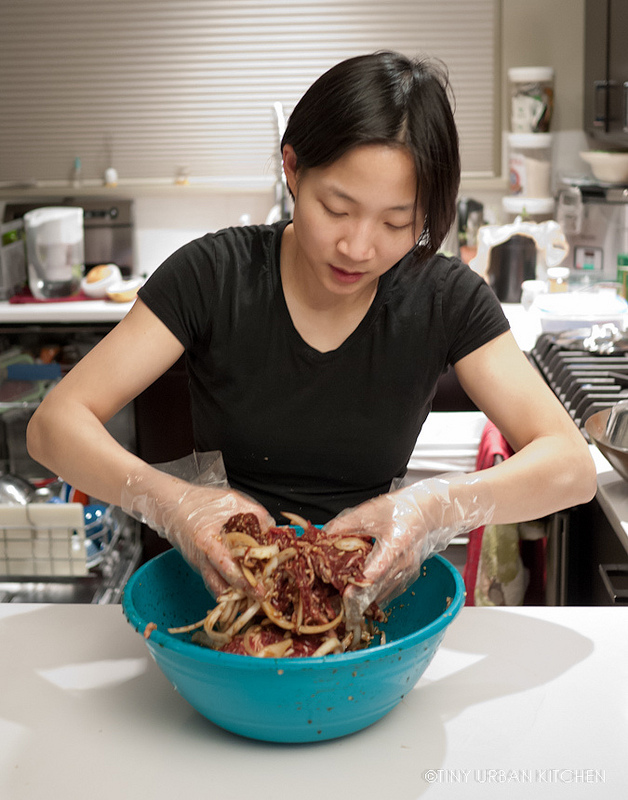
I find it easiest to get my hands dirty and really mix it up well. Since I usually make this in large volumes while entertaining (ha ha, certainly not at home when it's just me and Bryan), it's pretty impossible to adequately mix up everything with just a little spoon.
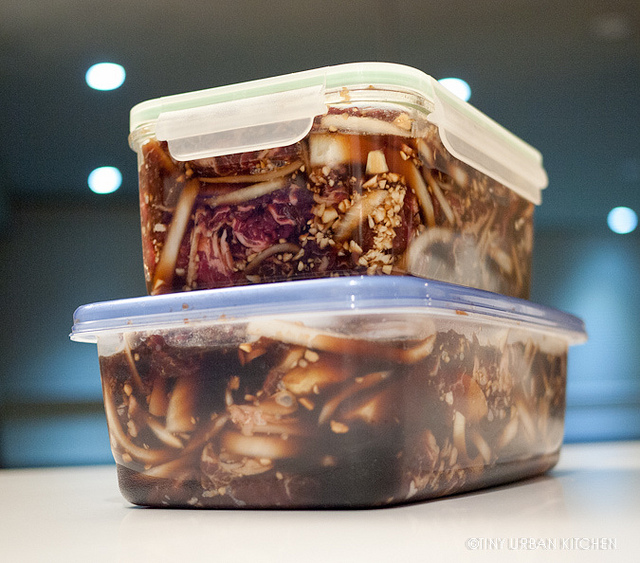
Let marinate overnight.
The next day, add sesame oil to the mixture, either the morning of or up to just before cooking.
Fire up the grill or oven broiler, and cook accordingly!

To serve, pull apart some gorgeous Boston lettuce.
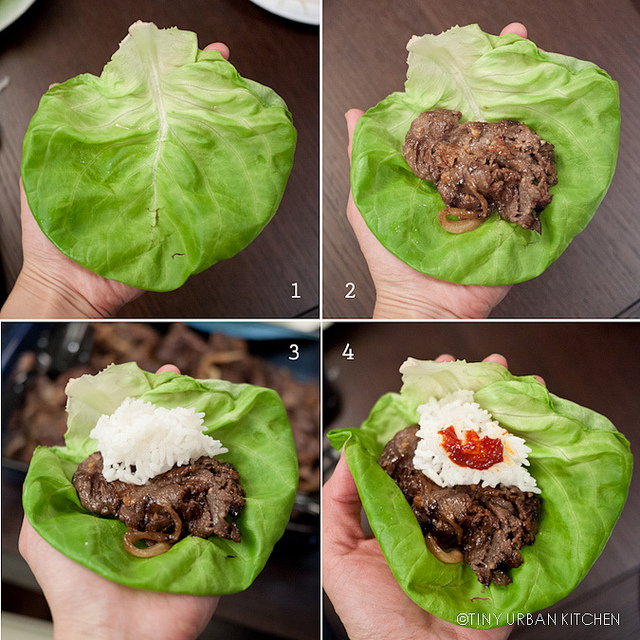
Let guests assemble their own bulgolgi wraps. I like to provide some rice and gochujang sauce mixed with sesame oil.
Enjoy!
Korean Bulgogi Recipe
prep time 20 minutes | cook time 15 minutes | serves 4
total time: 36 hours
Ingredients
1 to 1 ½ lb thinly sliced sirloin beef
Marinade
½ cup soy sauce
½ cup sugar
1 tablespoon minced ginger
3 tablespoons minced garlic
½ ripe Asian pear, mashed
2 small onions, sliced
3 tablespoons sesame oil
Fixings
3 cups of rice, cooked
1-2 bunches of Boston lettuce leaves
Sauce
⅓ cup gochujang sauce (Korean red pepper paste)
1 tablespoon sesame oil
Combine all marinade ingredients except the sesame oil. Add the beef to the marinade and mix well. Refrigerate overnight. Right before grilling, add sesame oil, mix well. Ideally cook on a grill or in the broiler. The beef is ready when it is nicely charred and a little crunchy on the edges.
You can also cook this on a grill pan or even on the stovetop in a hot pan, but it might not get as charred and may steam a bit more.
Mix together gochujang sauce and sesame oil. Set aside.
Serve with Boston lettuce leaves, rice, and sauce.
All Rights Reserved








